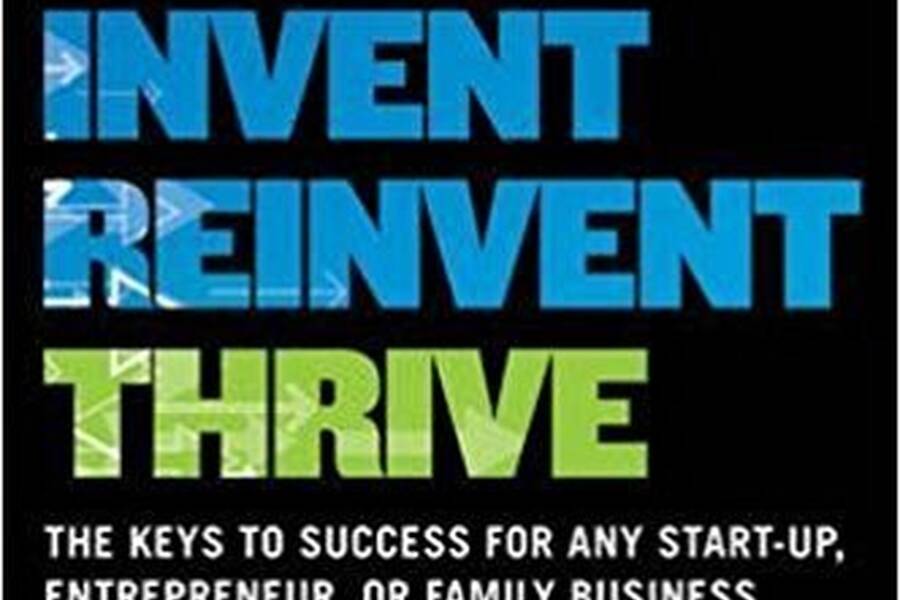Organizations Leadership Mar 7, 2016
How a Family Business Can Capitalize on Its Unique Culture
You need a different playbook when the CEO is your sister.

Yevgenia Nayberg
Family businesses don’t always have it easy. Internal conflicts, inconsistent standards, a lack of alignment, and any number of other pitfalls can be magnified by an executive board whose members have known each other since they were in diapers.
But top-performing family businesses also enjoy certain advantages. “Being family owned is a great source of strength,” says John L. Ward, clinical professor of family enterprise and the codirector of the center for family enterprise at the Kellogg School. The most central of these strengths is the ability to foment a values-driven culture—something that comes to family businesses more naturally due to a shared sense of history, vision, and purpose—as well as a shared legacy.
As in all organizations, creating a winning culture is an active process. But what can family enterprises in particular do to harness their inherent cultural advantages?
Learn more about Kellogg Executive Education programs related to the Center for Family Enterprise here.
Take the Long View
All businesses share a fundamental need to compete and grow. But the best-performing family businesses compete and grow a bit differently.
Unlike their bottom line–driven competitors, family businesses are driven by the desire for continued success over generations. “Because they have a longer time horizon, they can be a little more patient and take a more calculated risk—and they can protect their risk,” Ward says.
This allows family companies to take on initiatives that need more time to gain traction. One classic example of this determination is the family-owned confectioner Mars, which made a decision to reposition its Snickers candy bar as a snack for adults. The company invested in the strategy for years before it saw any return.
“There is a healthy tension between those who advocate a longer-term view and those who advocate an earlier performance result.”
“Of course, Snickers is now the number-one candy bar,” Ward says. “They were willing to spend a lot of money in promotion and marketing to get the message across that this was a special brand. Most nonfamily businesses would not invest for 3–5 years before they expect a return.”
A long view also can come to define a company’s unique identity. Being family owned has allowed the pharmaceutical company F. Hoffmann-La Roche to put its primary focus on advanced R&D projects, rather than copying the time horizons, projects, and products of most of its competitors.
A caveat is in order: a long-term view can conveniently excuse a culture that promotes inefficiency, a lack of discipline, and poor performance. Family companies should take care not to fall into this trap. An independent Board of Directors can act as a reality check, providing an objective view to the family ownership and leadership.
“There is a healthy tension between those who advocate a longer-term view and those who advocate an earlier performance result,” Ward says.
Mind the Flock
The parents, children, siblings, and cousins that may preside over a family enterprise tend to have very close relationships. These bonds define and enrich a culture that, in the business’s early stages, might be indistinguishable from the family’s personal lives.
As the business grows larger, however, it inevitably needs to hire talent beyond the family. Because its unique culture may be difficult for new hires to decipher, successful family businesses must pay special attention to the people they bring onboard—and the way those hires are acculturated.
Smart family businesses create a leadership team that balances continuity and fresh ideas. This can be done by setting guidelines for the senior management team’s composition—for instance, by aiming for equal portions of family members, long-standing employees, and new leaders from outside the company.
Carving out space for new hires can be done by splitting functions in a growing company. For example, if a company has a long-standing head of sales and marketing, a new hire may be brought in to take over the marketing function, or a longtime chief operating officer may bring in a quality-control expert. “There are ways in which you can find spots for people that are not truly virtually redundant,” Ward says. “This creates a group of people in the organization that are coming up to speed, but they are not also pushing out the door the previous generation of management.”
In addition to having the right skills, prospective employees must have the right mindset. First, to do justice to a family business’s robust sense of legacy, a new hire must value long-term perspective over short-term gains. It helps if the prospective employee has a sense of idealism about the company’s mission. While this may hold true for other types of businesses, this idealism becomes especially important when one’s coworkers might be descended from its deeply revered founder.
Luckily, identifying, attracting, and selecting new people for employee and board positions tends to be the hard part, Ward says. Retention? Not so much. “Once they’re part of the culture, it’s not as tricky to keep them,” he says. When they are in, they are in to stay.
Stay Close
The biggest obstacle to a family enterprise can, paradoxically, derive from its success.
“I think the biggest challenge to maintaining a successful culture is if the family becomes distant from its business,” Ward explains. As a family and its business grow, so does the distance among its members. “A family’s closeness can wear away with time as the family gets older and larger and family members live all over the world.”
As a family spreads out into other countries, their shared vision—and the culture it creates—runs the risk of disappearing.
“Having a family business is a beautiful opportunity for a family to have reason to stay together,” Ward says, “So the more time the business has to spend buying out family shareholders, the less it has for strategy.”
As they grow, many companies are tempted to break themselves up into smaller units as a way to operate more efficiently. Family businesses, by contrast, tend to try to stay unified because they view the business as a legacy or a purpose, rather than a collection of assets. But that unified vision can be difficult to maintain.
For the family that founded the Dow Jones company, intergenerational apathy led to the sell-off of the business after years of fragmenting interests. “There was virtually no outreach from the business or family leaders to engage and to support the interests and attachment of the family members,” Ward says. “It led in a large part to the sale of the company. Some family members then wrote publicly that if only their parents had told them about the business while they were growing up, they would have appreciated it much more.”
So what can a family do to stay close?
They can host family for company educational meetings. These may include site visits to the company’s facilities to give family members exposure to the inner workings, culture, and even geographical reach of the company. Family businesses can also use targeted publications such as newsletters to provide information about and foster connection to the business.
“The real key,” says Ward, “is to create opportunities for family members who don’t work in the business to feel close to the business emotionally so that they get the pleasure and privilege, but they are also committed long term to the importance of family involvement for growth.”
